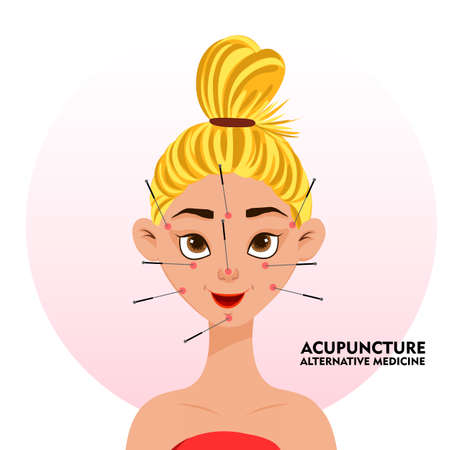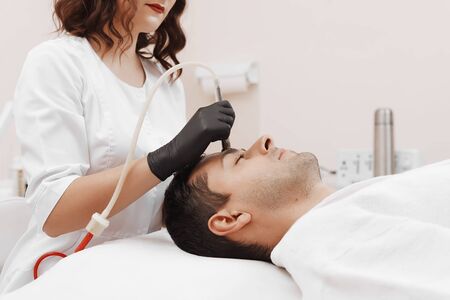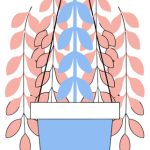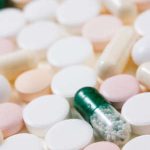1. Understanding PRP for Hair Loss
Platelet-Rich Plasma (PRP) therapy is a popular treatment for hair loss that leverages the bodys natural healing abilities. This non-surgical procedure involves drawing a small amount of your blood, processing it to concentrate the platelets, and then injecting the PRP into the scalp. The goal is to stimulate hair follicles, improve blood circulation, and encourage hair regrowth.
How Does PRP Work?
The platelets in PRP contain growth factors that help repair damaged tissues and promote cell regeneration. When injected into the scalp, these growth factors activate dormant hair follicles, prolong the growth phase of hair, and increase hair thickness.
Key Benefits of PRP for Hair Loss
- Stimulates Hair Follicles: Encourages inactive follicles to start producing hair again.
- Improves Hair Thickness: Enhances the density and strength of existing hair.
- Minimally Invasive: A non-surgical option with little to no downtime.
- Uses Your Own Blood: Reduces the risk of allergic reactions or complications.
Who Can Benefit from PRP Therapy?
PRP therapy is most effective for individuals experiencing early-stage hair thinning or androgenic alopecia (pattern baldness). It works best when hair follicles are still present but weakened. People with complete baldness may not see significant results as there are no active follicles to stimulate.
Ideal Candidates for PRP Treatment
| Candidate Type | Effectiveness |
|---|---|
| Mild to Moderate Hair Thinning | Highly Effective |
| Earl-Stage Male/Female Pattern Baldness | Effective |
| Severe Baldness (No Active Follicles) | Less Effective |
| Alopecia Areata or Other Medical Conditions | Varies by Case |
The Science Behind PRP and Hair Growth
The success of PRP therapy lies in its ability to enhance follicular function. Growth factors like platelet-derived growth factor (PDGF), vascular endothelial growth factor (VEGF), and transforming growth factor (TGF) work together to strengthen hair roots, reduce shedding, and support healthier scalp conditions.
Main Growth Factors in PRP for Hair Restoration:
- PDGF (Platelet-Derived Growth Factor): Stimulates new cell formation and tissue repair.
- VEGF (Vascular Endothelial Growth Factor): Improves blood supply to nourish hair follicles.
- TGF (Transforming Growth Factor): Helps regulate inflammation and support follicle health.
By understanding how PRP works for hair loss, you can make an informed decision about whether this treatment is right for you. The number of sessions required will depend on various factors, including the severity of hair loss and individual response to treatment. In the next section, well explore how many PRP sessions you may need for optimal results.
2. Factors That Influence the Number of PRP Sessions
The number of PRP (Platelet-Rich Plasma) sessions needed for hair loss varies from person to person. Several factors influence how many treatments are required to achieve the best results. Understanding these key considerations can help you set realistic expectations for your PRP treatment plan.
Hair Loss Severity
The extent of hair loss plays a significant role in determining the number of PRP sessions needed. Those with mild thinning may see results faster, while individuals with more advanced hair loss might require additional treatments.
| Hair Loss Stage | Recommended PRP Sessions |
|---|---|
| Mild Thinning | 3-4 sessions |
| Moderate Hair Loss | 4-6 sessions |
| Severe Hair Loss | 6+ sessions, with maintenance treatments |
Age and Healing Ability
Younger individuals tend to have a better response to PRP treatments because their body’s natural healing processes are more efficient. However, older patients can still benefit from PRP; they may just need more sessions or longer treatment durations.
Genetics and Family History
If hair loss runs in your family, you might need more frequent PRP sessions to maintain results. Genetic hair loss is progressive, so ongoing maintenance treatments may be necessary even after initial improvements.
Overall Scalp Health
A healthy scalp provides a better environment for hair growth. Conditions like dandruff, excessive oil production, or poor circulation can affect how well PRP works. Taking care of your scalp through proper hygiene and nutrition can enhance your treatment outcomes.
Lifestyle and Diet
Your overall health also impacts how effective PRP therapy will be. A nutrient-rich diet, good hydration, and avoiding smoking or excessive alcohol consumption can improve your body’s ability to regenerate hair follicles.
The Role of Maintenance Treatments
Even after completing the initial round of PRP sessions, maintenance treatments are often recommended to sustain hair growth. Many patients opt for follow-up treatments every 4-6 months to keep their results long-term.

3. Typical PRP Treatment Plan and Timeline
When considering PRP therapy for hair loss, its important to understand the typical treatment schedule. PRP is not a one-time procedure; it requires multiple sessions to achieve the best results. Below, we break down the standard PRP treatment plan, including the initial phase, maintenance treatments, and what you can expect over time.
Initial PRP Treatment Phase
The initial phase of PRP therapy typically involves several sessions spaced a few weeks apart. This helps stimulate hair follicles and promote regrowth effectively.
| Session | Timing | Purpose |
|---|---|---|
| First Session | Week 1 | Kickstarts follicle stimulation and healing process |
| Second Session | Week 4 | Enhances blood flow and reinforces follicle activation |
| Third Session | Week 8 | Sustains hair regrowth momentum and strengthens follicles |
| Fourth Session | Week 12 | Adds further reinforcement for optimal results |
The Maintenance Phase
After completing the initial phase, most patients transition into a maintenance schedule to sustain their results. This typically involves fewer sessions spread out over time.
| Treatment Frequency | Purpose | Expected Results |
|---|---|---|
| Every 4-6 months | Keeps hair follicles active and prevents excessive shedding | Sustained hair density and healthier scalp condition |
| Annually (optional) | Adds extra reinforcement if needed for long-term benefits | Makes sure hair remains thick and strong over time |
What to Expect Over Time?
The effects of PRP therapy build up gradually. Here’s a general timeline of what you might experience:
The First Few Weeks:
You may notice reduced hair shedding. Some patients report mild improvements in hair texture.
The First 3-6 Months:
This is when visible changes start to appear. Hair may look fuller, and new growth becomes noticeable.
The 6-Month Mark and Beyond:
If you’ve followed your treatment plan consistently, you should see significant improvements in density and overall scalp health.
A well-planned PRP treatment schedule ensures the best possible outcome. By sticking to both the initial phase and ongoing maintenance sessions, patients can enjoy long-lasting benefits.
4. What to Expect During and After PRP Sessions
Platelet-rich plasma (PRP) therapy for hair loss is a minimally invasive treatment that can promote hair regrowth by stimulating the hair follicles. If youre considering PRP sessions, it’s important to understand what happens during the procedure, possible side effects, recovery time, and post-treatment care.
What Happens During a PRP Session?
Each PRP session follows a structured process to ensure effective treatment. Here’s what you can expect:
| Step | Description |
|---|---|
| 1. Blood Draw | A small amount of blood is drawn from your arm, similar to a routine blood test. |
| 2. PRP Preparation | The blood is placed in a centrifuge to separate platelet-rich plasma from other components. |
| 3. Scalp Numbing | A topical anesthetic or numbing agent may be applied to minimize discomfort. |
| 4. PRP Injection | The concentrated plasma is injected into targeted areas of the scalp using a fine needle. |
| 5. Post-Treatment Care | You may receive aftercare instructions to optimize healing and results. |
Potential Side Effects of PRP Treatment
PRP therapy is generally safe, but like any procedure, there are potential side effects. Most are mild and temporary:
- Mild Pain or Discomfort: Some soreness or tenderness at the injection sites.
- Slight Swelling or Redness: Temporary inflammation that subsides within a day or two.
- Tingling or Numbness: A common sensation due to the numbing agent used before injections.
- Mild Bruising: Small bruises may appear but should fade within a few days.
- No Downtime Required: Most patients can return to normal activities immediately after treatment.
The Recovery Process: What to Expect After Treatment
The recovery period after PRP treatment is minimal, but taking proper care of your scalp can help enhance results. Below is a general timeline of what you might experience post-session:
| Timeframe | What to Expect | Recommended Actions |
|---|---|---|
| The First 24 Hours | Mild redness, swelling, and tenderness on the scalp. | Avoid touching or washing your scalp for at least 12 hours. |
| The First Few Days | Slight sensitivity; minor bruising may appear. | Avoid excessive sun exposure and strenuous exercise. |
| The First Week | The scalp begins to feel normal again; early healing occurs. | You can resume your regular hair care routine as advised by your provider. |
| The First Month+ | You may start noticing subtle improvements in hair thickness. | Avoid harsh chemical treatments or coloring for at least two weeks. |
Caring for Your Scalp After PRP Therapy
Your provider will give you specific aftercare instructions tailored to your needs, but here are some general tips to follow for optimal results:
Avoid Harsh Hair Products
Avoid using shampoos with strong chemicals for the first few days after treatment. Opt for gentle, sulfate-free products instead.
No Intense Physical Activity for 24-48 Hours
Sweating excessively can irritate the treated area, so its best to avoid workouts and saunas for at least a day or two.
No Hair Treatments Immediately After PRP Sessions
If you plan on dyeing or chemically treating your hair, wait at least two weeks post-treatment to avoid irritation.
Nourish Your Scalp with a Healthy Diet
Nutrient-rich foods with vitamins such as biotin, iron, and protein can support healthy hair growth alongside PRP therapy.
If you have concerns about any symptoms post-treatment, reach out to your provider for guidance on next steps. Consistency in following aftercare instructions can significantly impact how well the treatment works over time.
5. Is PRP the Right Solution for Your Hair Loss?
PRP (Platelet-Rich Plasma) therapy has gained popularity as a natural and effective treatment for hair loss. However, it’s important to determine whether it’s the best option for your specific situation. Factors such as the cause of hair loss, the severity of thinning, and your overall health can influence whether PRP will provide the results you’re looking for.
Factors to Consider Before Choosing PRP
Before committing to PRP therapy, take these key factors into account:
| Factor | Consideration |
|---|---|
| Cause of Hair Loss | PRP is most effective for androgenetic alopecia (male and female pattern baldness). If your hair loss is due to medical conditions, medications, or scarring alopecia, other treatments may be more suitable. |
| Stage of Hair Loss | The earlier you start PRP therapy, the better the chances of success. Advanced baldness with complete follicle loss may not respond well to PRP. |
| Overall Health | Your body’s ability to heal and regenerate plays a role in PRP effectiveness. Conditions like autoimmune diseases, bleeding disorders, or poor platelet function might reduce its success. |
| Lifestyle and Expectations | PRP requires multiple sessions and ongoing maintenance. If you’re looking for a one-time solution or expecting instant results, PRP may not be the best fit. |
| Budget and Commitment | Treatment costs vary, and insurance typically doesn’t cover PRP for hair loss. Consider whether you’re willing to invest in multiple sessions over time. |
When to Explore Alternative Treatments
If PRP doesn’t seem like the right fit for your hair restoration journey, there are alternative treatments worth considering:
- Medications: FDA-approved options like minoxidil (Rogaine) and finasteride (Propecia) can help slow hair loss and promote regrowth.
- Low-Level Laser Therapy (LLLT): Laser devices stimulate hair follicles to encourage growth and improve thickness.
- Surgical Options: Hair transplant procedures provide permanent solutions for those with significant hair loss.
- Lifestyle Changes: Improving diet, reducing stress, and addressing underlying health issues can also enhance hair health naturally.
Consulting a Specialist for Personalized Advice
The best way to determine if PRP is right for you is by consulting a qualified medical professional. A specialist can assess your scalp condition, review your medical history, and recommend a personalized treatment plan that aligns with your goals and expectations.


